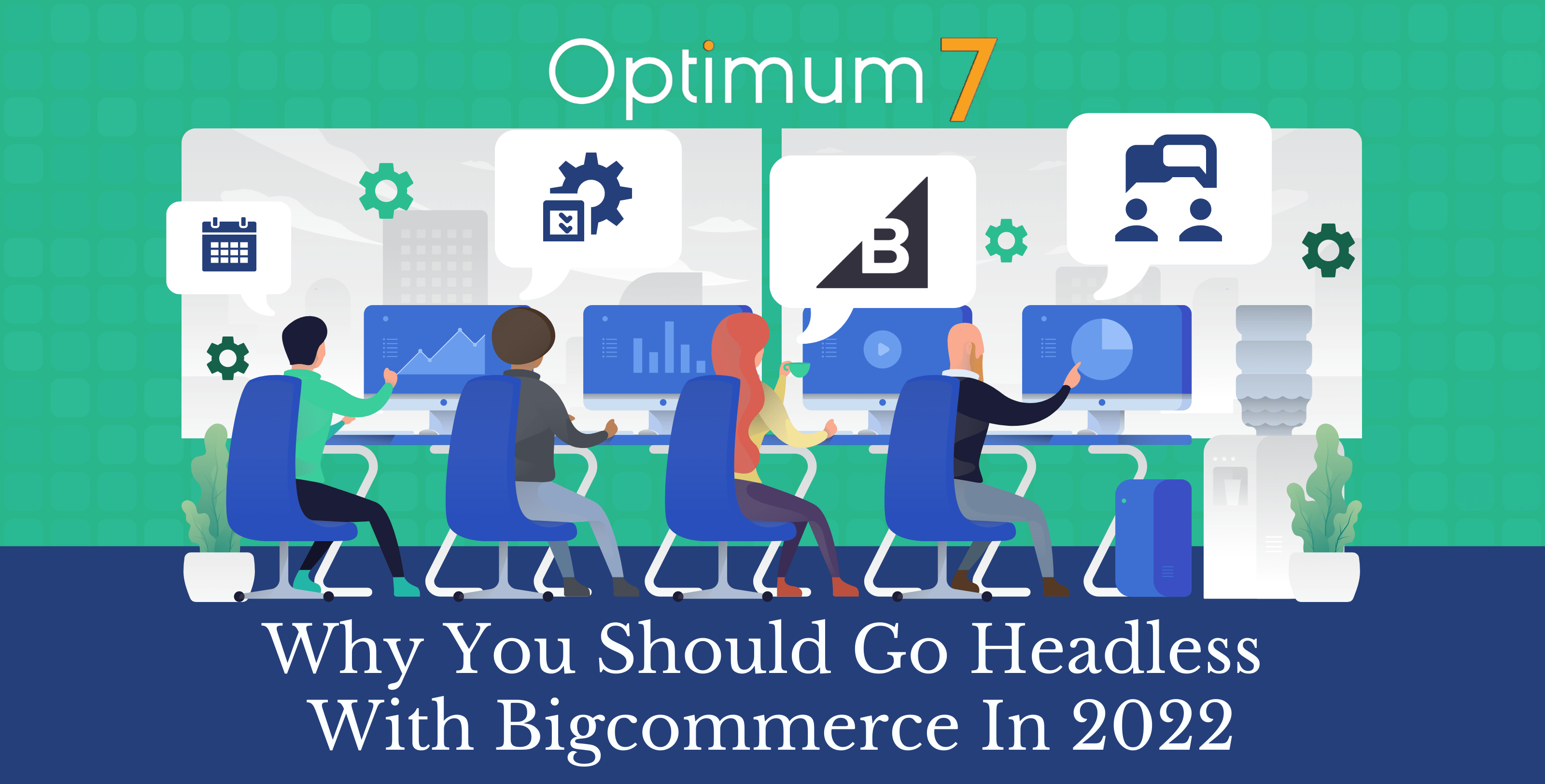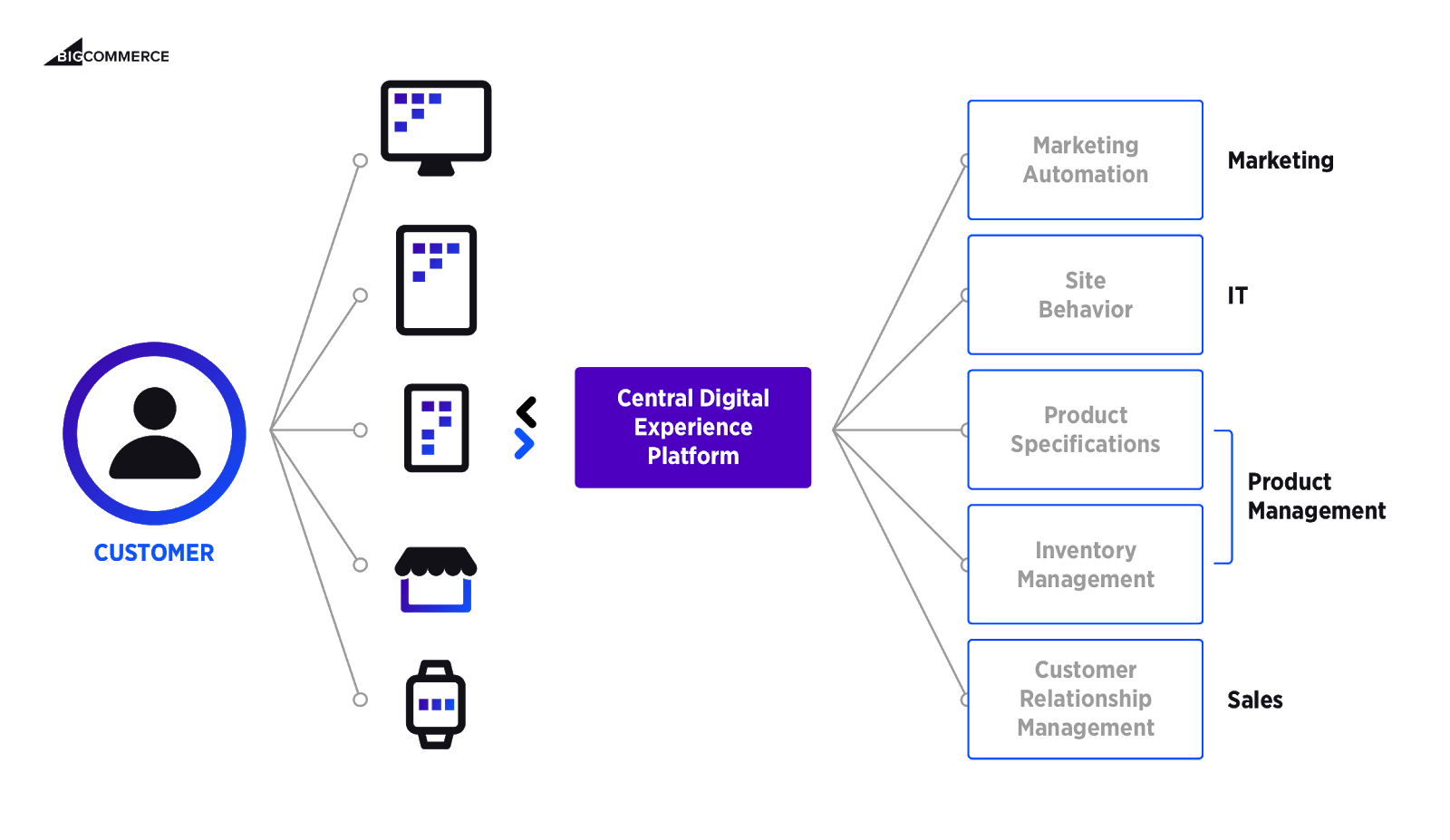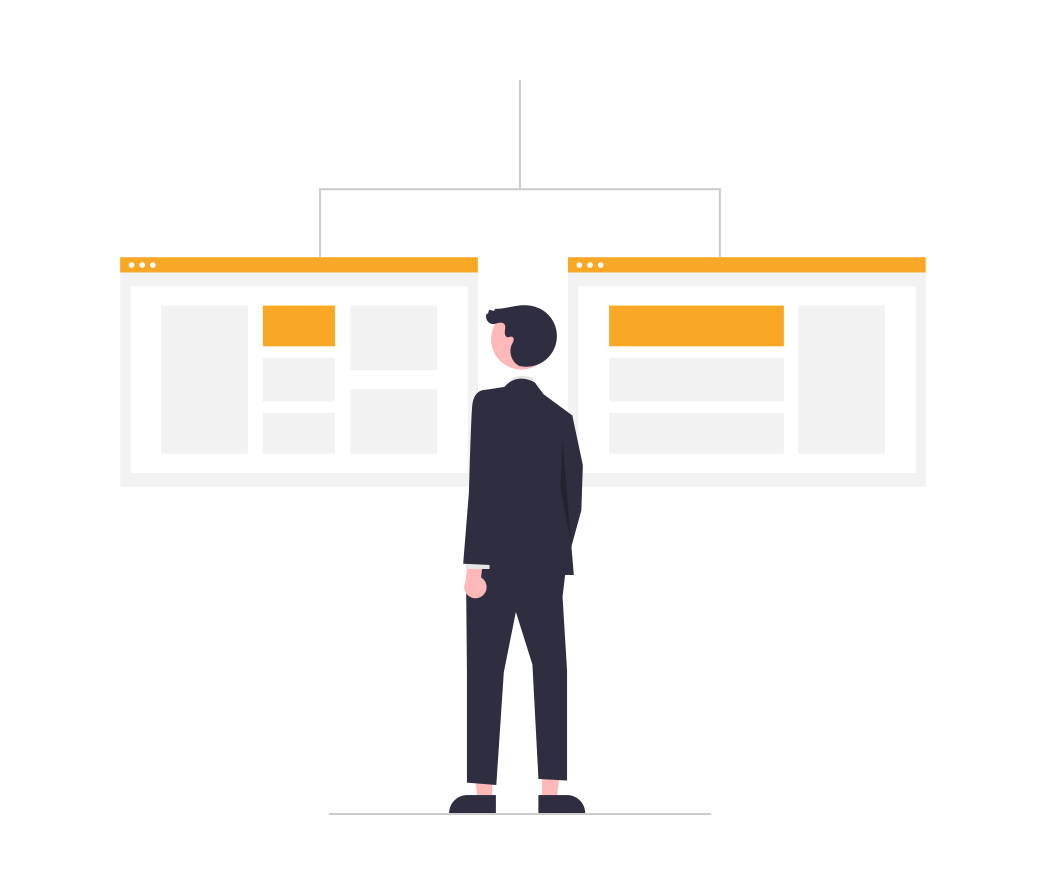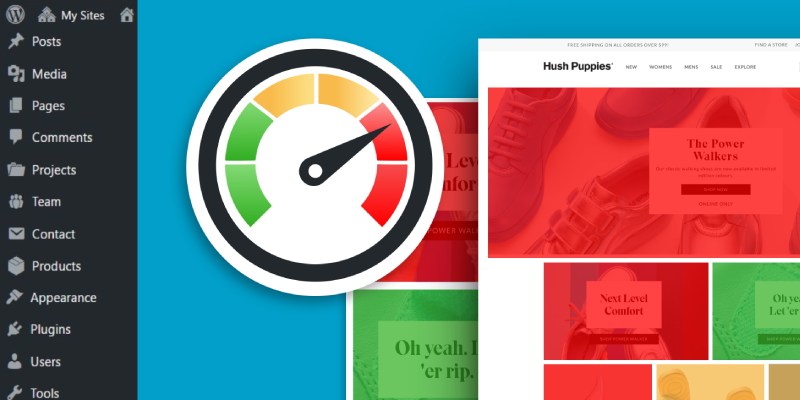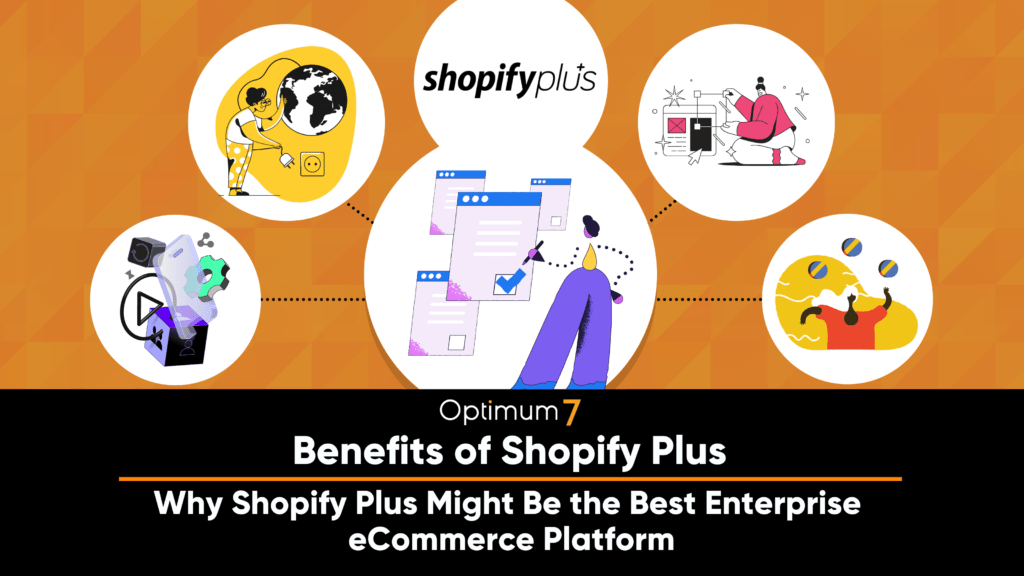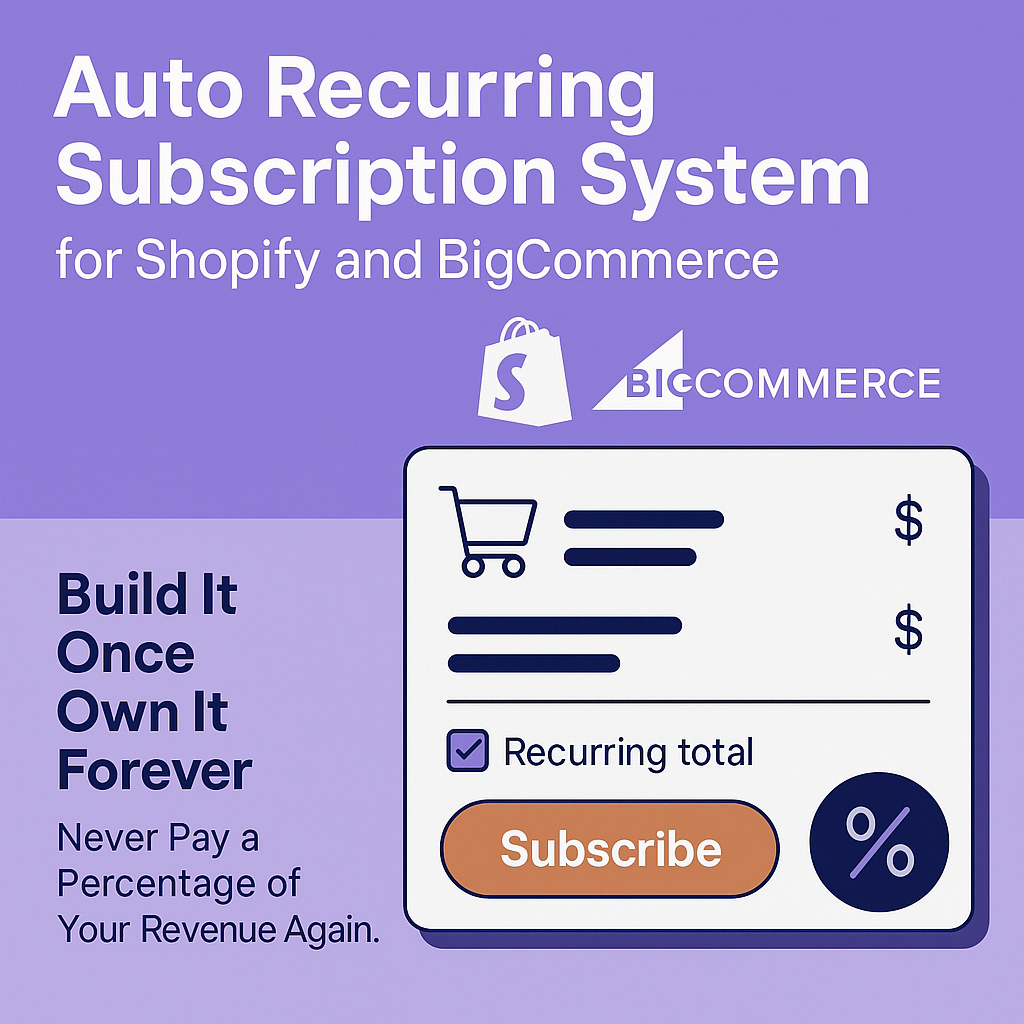The days of having a webshop with a single multichannel are long gone, because these days, it’s all about multichannel management and multistore retail. You must truly comprehend your consumers, including who they are, what they want, and how they want it.
Consumers nowadays purchase and consume information on a variety of devices, so you have to conquer all of those devices so you can maximize sales. Product information should be accessible and discoverable, and your website should load in much less than four seconds and convert at a rate of 2%.
Doesn’t it seem to be rather simple? Yes, but for many, these goals are proving to be nearly unachievable if they stick to traditional eCommerce platforms alone!
This is where specialized BigCommerce website development can make a significant difference, offering the advanced features and flexibility needed for effective multichannel and multistore management.
Going Headless with BigCommerce in 2024
In this short article, we’ll go through some of the advantages and disadvantages of switching from a conventional setup to headless BigCommerce Development, as well as touch on the costs.
If you’re still unsure whether going headless with BigCommerce is worthwhile after reading, we’ll direct you to someone who can answer your questions.
If you are planning on migrating to Shopify and want a headless approach to that platform, check out our article about how to go headless with Shopify.
Traditional eCommerce Platform Issues
As a whole package, BigCommerce is excellent as a starting point for a small eCommerce business. It will get you up and running, but as your business grows you will eventually need more specific solutions.
Most of the major complaints about BigCommerce center on its limited variety of great templates. Furthermore, many complain about how time-consuming it is to create a bespoke theme, and even then, the process won’t always lead to perfection.
Traditional eCommerce platforms have shown to be less than ideal in the age of headless eCommerce, with 55 percent of all spending exceeding 500K each year. These conventional CMSs aren’t sustainable for big businesses with huge goals; however, a new solution may change everything!
Many eCommerce businesses require a platform that scales with them.
Retailers are frustrated with current market conditions, which drives them to pursue solutions like utilizing decentralized technologies, such as headless commerce solutions. These solutions allow more freedom in areas where other projects lack customer intimacy capabilities, such as assisting vendors in selling higher-ticket items while still keeping low price points.
Additionally, installing supplemental functionality requires either the use of plugins or timely development in accordance with BigCommerce best practices. In fact, even important changes to the user interface fall into the same category.
When you go to perform A/B testing on the interface or make changes that break something in the analytics, or how the products are managed on the backend, this is a major hassle. There’s no way to effectively let data drive your site’s progress.
What is Headless BigCommerce?
The practice of separating a website’s front-end display layer from the back-end eCommerce features is known as headless commerce architecture.
Developers may use their preferred front-end technology to produce high-quality content experiences, then connect an eCommerce system to handle all backend commerce operations.
In this model, eCommerce platforms provide PCI compliance, security, fraud management, and inventory management services that can link to key infrastructure points such as ERPs, PIMs, OMSs, and POS terminals.
It’s easy to see how headless commerce may provide enterprises with more options when it comes to eCommerce platforms. A content-led or experience-led strategy, such as headless commerce, is typically a no-brainer for experience-focused businesses like lifestyle items, direct-to-consumer (DTC) companies, and brands that rely on customer experience.
The headless architecture allows companies to make adjustments quickly in order to stay up with the times, which is critical in today’s marketplace. Businesses are competing for attention and combating rising consumer acquisition costs.
Advantages of Headless BigCommerce
The benefits of changing your BigCommerce website to a headless build are as follows:
Interactive Interface
With a BigCommerce headless commerce setup, you have more options for which technology to use to create the user interface (UI). Rather than being trapped in BigCommerce’s system, your site may now be driven by a gorgeous, dynamic ReactJS or VueJS interface.
No Template Limitations
When it comes to templates, BigCommerce’s free options are lacking.
A headless layout opens up new design possibilities for your website. Because you’ll most likely want to start from the ground up, your site won’t be restricted to that generic “template” appearance.
Migrating to a New eCommerce Platform
An eCommerce system that does something completely unexpected will occasionally cause you to get frustrated and search for a new option. Eventually, you may find it necessary to migrate to a new platform.
Unfortunately, the only choices for these customers are to pay more or entirely rebuild their operations. They could’ve switched eCommerce platforms without having to start from scratch if they had used a headless architecture while building their stores.
This isn’t to imply that switching from one system to another is simple. Although some remodeling is required, it is much easier and quicker than creating from scratch.
New Services
For your headless BigCommerce setup, Gatsby or NextJS is the frontend framework that makes adding new services a breeze.
Let’s assume that you’ve decided to increase marketing efforts and use a new CRM platform in your company. A standard BigCommerce build would take a long time and effort to connect the two systems with each other.
A headless BigCommerce store, on the other hand, is already powered by API, allowing you to quickly identify which website events should trigger CRM activities.
All the Tools from BigCommerce are Yours to Keep
This may get overlooked when you’re thinking about integrating new technologies and creating wild, interactive interfaces, but going headless does not imply that you’re using a diluted version of BigCommerce. The greatest features of product and order administration, payment processing, and reporting are all yours to retain.
Some functionalities aren’t going to work, however. Because analytics isn’t connected to the right front-end, they won’t tell you much.
Fortunately, there are several good analytics solutions available, including Google Analytics and Segment.
Split Testing
Using a headless setup, modifications to your site’s functionality can be rapid. Introducing builder.io gives you the ability to change your website’s content with a drag-and-drop builder.
The majority of the time, you won’t need the help of a developer to make substantial interface adjustments. This is a significant step forward for split testing (also known as A/B testing).
The majority of eCommerce businesses are already competitive and crowded. It is critical that you test your website to improve it, if you want to stay ahead of the competition.
Making major design changes in a standard BigCommerce setup necessitates a lot of testing.
There’s a potential that making a front-end change will damage analytics, ordering, or product management. As a result of the long and clumsy approach, fewer tests are done.
Running a headless setup on your BigCommerce store allows you to execute numerous tests each week, resulting in higher conversion rates and outranking the competition.
Branding
Finding a theme or template that perfectly fits your business’s brand is tough. Most of the time you’ll end up wanting to change things around.
Going headless provides you the ability to quickly transform a bespoke design into a new theme, so you won’t have to make any compromises along the process.
Better Blog
The default BigCommerce blog isn’t particularly exciting. The core development team seems to have put all of their chips into product and order management, leaving the blog as a sort of an afterthought.
As we pointed out previously, utilizing a headless CMS allows you to take advantage of nearly any CMS blogging capabilities. Since the front end of your website may be created and managed in any way your design team sees fit, you may provide visitors with a smooth reading experience.
The user experience of blog articles is something that usually isn’t given enough attention but can have a significant influence on your site’s bounce rate.
Speed and Performance Improvements
Because of performance issues, many businesses go headless. When you’re managing hundreds of apps and integrations through a single platform, you’ll run into problems with speed and efficiency, but going headless helps these difficulties dissipate.
The importance of performance is only going to increase in time after we saw the “User Experience” Google update in June 2021. In headless BigCommerce, the storefront is separated from the data and sophisticated queries using a decoupled headless architecture.
When a thousand additional customers arrive, your store’s performance won’t suffer. When you run Gatsby or NextJS with a headless configuration, the site’s content is pre-rendered as static assets that are served via a content delivery network rather than communicating with a server. This drastically reduces the time it takes for your site to load.
Total Control
Separating front-end and back-end implies that conventional platform aspects like system security, stock management, and website performance are now controlled individually.
Essentially, this implies that you are no longer restricted by the capabilities of your previous online store; for example, anything you do in the front-end will have no bearing on the back-end.
The same goes for the other direction. Specific apps and third-party suppliers govern the technical parts, giving client-facing teams more control over responsibilities like revenue generation, marketing testing, and more!
Disadvantages of Headless BigCommerce
Yeah, headless BigCommerce is amazing and all that, but there are certain things that could cause frustration for some users.
Let’s look at them as well so you won’t jump in without knowing the downsides…
You will Need Third-Party Help
BigCommerce headless setups aren’t appropriate for small, experimental, or low-budget businesses. A web designer and developer must be involved in the creation of the website.
It’ll put the brakes on your project if you’re attempting to bootstrap your first business, but need to hire a designer and developer — and then wait for them to construct it.
More Systems to Manage, More Issues to Solve
Adding a headless site means you’ll have to deal with additional technical systems in order to maintain your website. Rather than simply switching over to BigCommerce to modify content, add new items, and monitor analytics, you’ll be working on three separate platforms instead.
If you’re familiar with online technologies, this isn’t a major disadvantage because you’re already familiar with using a variety of platforms in your daily activities. If you like to keep things simple and consolidated, though, you’ll have to get used to switching between platforms.
You’ll Have to Rebuild Certain Plugins, If Not All of Them
Because of the nature of web application development, any plugin that has code on both the backend and frontend will need to be modified. If a plugin does not have a stable API, it may be difficult to get it functioning properly.
Fortunately, most popular plugins, such as stamp.io, AfterShip, and Yotpo, provide adequate APIs that may be used to enhance their functions. However, rebuilding the plugins will need a 3rd party agency’s help.
In other words, it takes more time and money to get started. These are two of the most crucial aspects that new companies struggle with.
Checkout Uses a Bigcommerce Domain
This is, without a doubt, the most serious flaw with headless eCommerce right now. The checkout procedure takes place on the BigCommerce domain, but your shop’s domain is where the buying experience occurs.
In the realm of internet security, transferring user credentials and authentication across domains is a huge no-no.
This implies that each user fills up the order form with their own information, and it doesn’t matter if they’re previous customers or if they’re currently signed into your business. Customers will still be required to complete the whole checkout procedure, which includes entering their name, email address, and credit card information.
The BigCommerce checkout will prompt you to log in by default and, if you accept this prompt, you’ll be brought to the default WooCommerce website, which is what the headless frontend is supposed to replace.
This disconnection between the front-end store and the checkout might have a negative influence on repeat customers’ experiences, especially if they frequently purchase from your store.
High Initial Costs
Setting up a headless BigCommerce shop necessitates a significant amount of effort. With regard to determining where your product will be sold, for example, you’ll need a designer and a developer, which means there are significant start-up costs.
For an average site, the design will take around 90 hours, and development will take up to 300 hours. This is going to mount up to a large bill, regardless of what your designer and developer are charging.
At the end of the day, it’s a growth strategy. Going headless is a substantial upfront investment that pays off handsomely in the long run.
You will need a 3rd-Party Analytics Tool
Adding a bespoke front-end to your store breaks the link between BigCommerce and analytics, and it’s difficult to run a business without analytics. There are numerous signals you need to keep track of in order to make commercial judgments.
To get this functionality up and running again, you’ll need to install an analytics platform like Google Analytics or Segment.
Conclusion
We’re only talking from a “need to have it” perspective here; we’re not suggesting that Headless commerce is for everyone. However, it will be in the near future.
In a competitive market, the shift may be difficult, but it starts with a mental adjustment. You want to make sure you choose technology providers who are trustworthy and have the capacity to deliver what you want.
Optimum7 is a preferred BigCommerce agency that has the skill set to help you achieve your eCommerce goals with ease. Contact us and let’s get started right away!
FAQs
– How to tell if you need a Headless Bigcommerce solution?
One of the first indications that your firm should look into a headless solution is if certain or all of its eCommerce store’s pages take too long to load. The longer it takes for your website to load, the more likely you are to have poor search rankings, lose customers, and unsold products.
– What are the advantages of going headless?
- Interactive and Customizable User Interface
- No Template Limitations
- Migrating to a New eCommerce Platform
- New Services
- All the Tools from BigCommerce are Yours to Keep
- Easier Split Testing
- Better Branding
- Better Blog
– What does it mean to go headless?
In a nutshell, headless commerce is an eCommerce solution that saves, maintains, and distributes content without the need for a front-end delivery layer. A headless commerce platform’s front end (or “head”), often a theme or template, has been decoupled.



